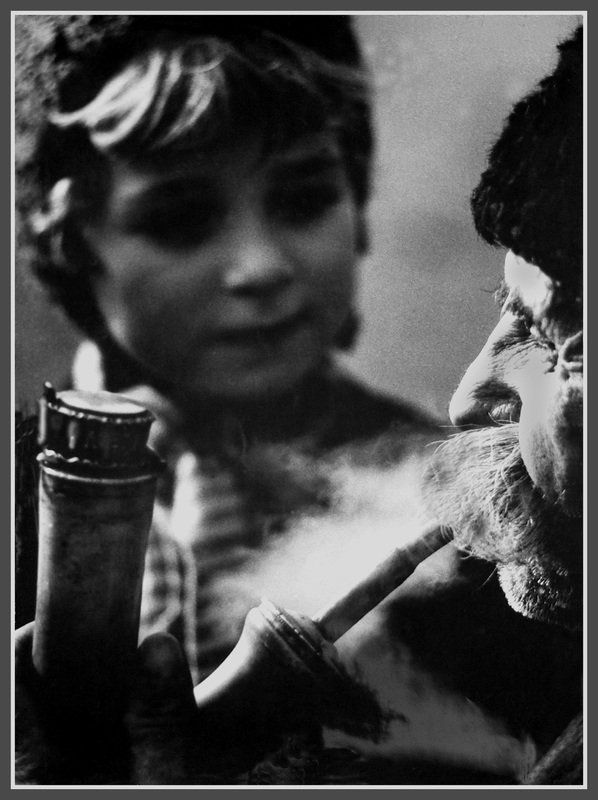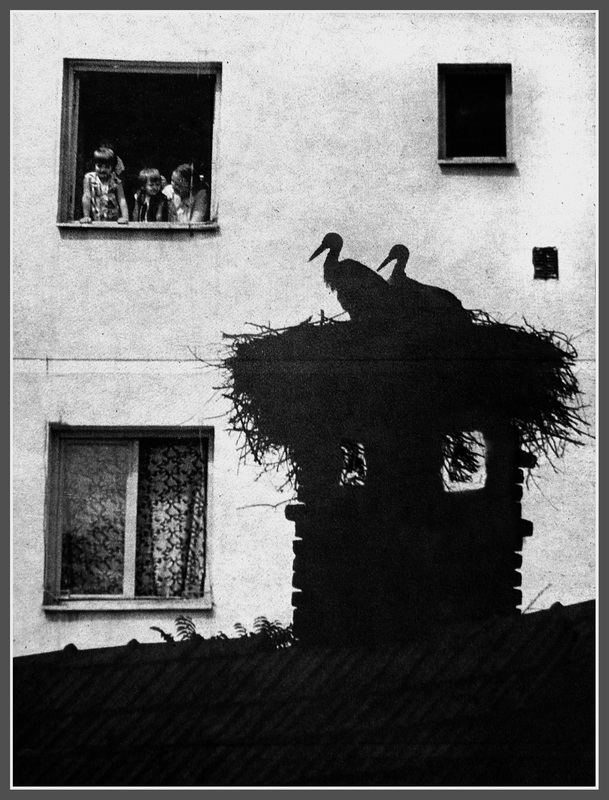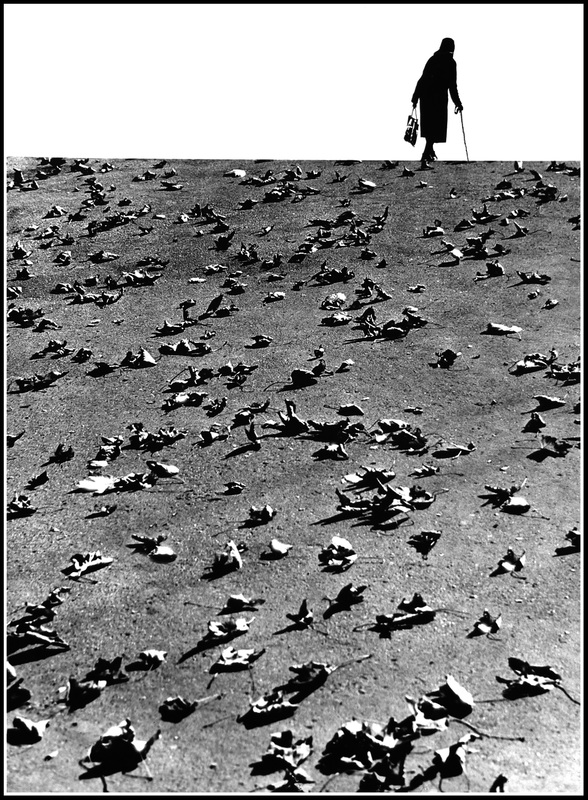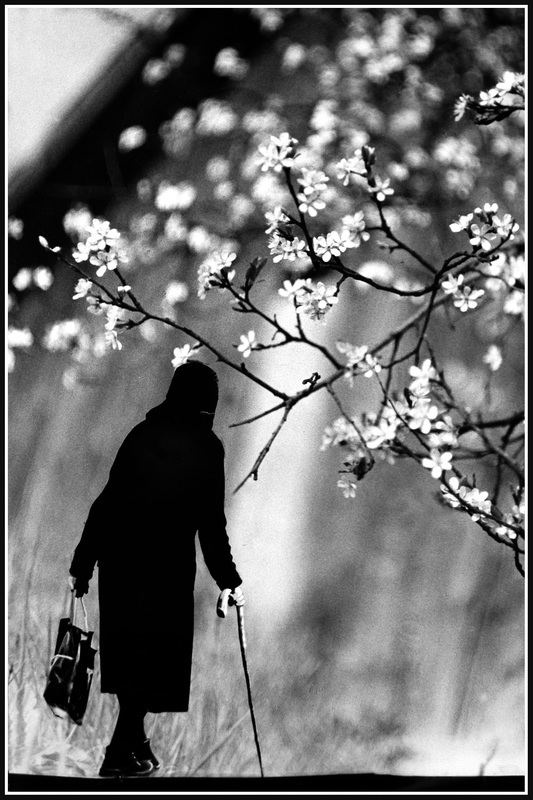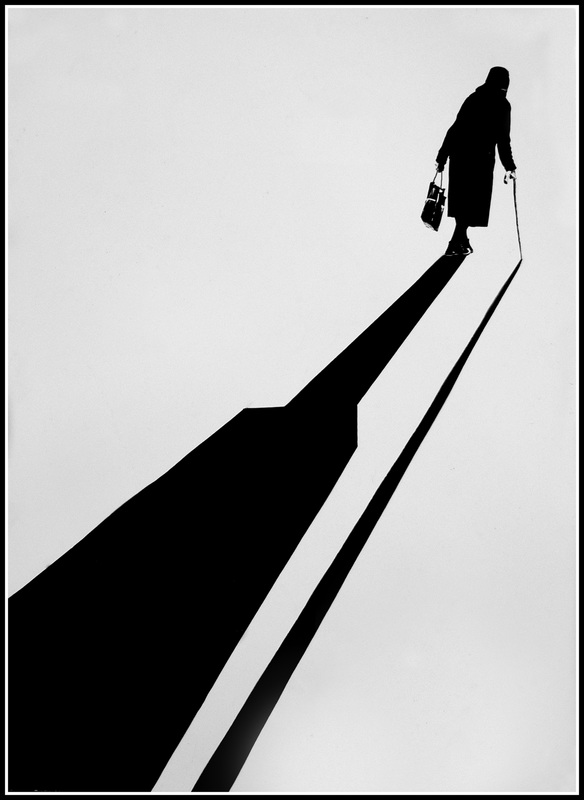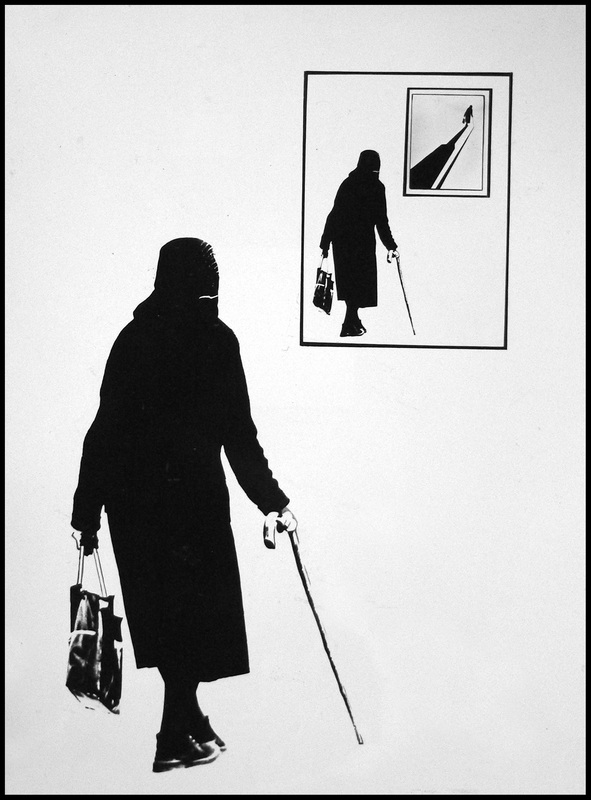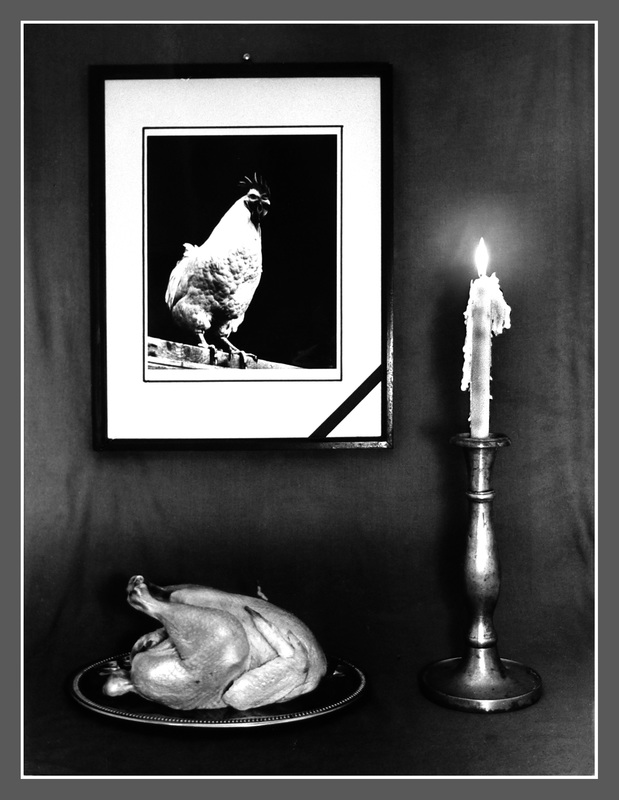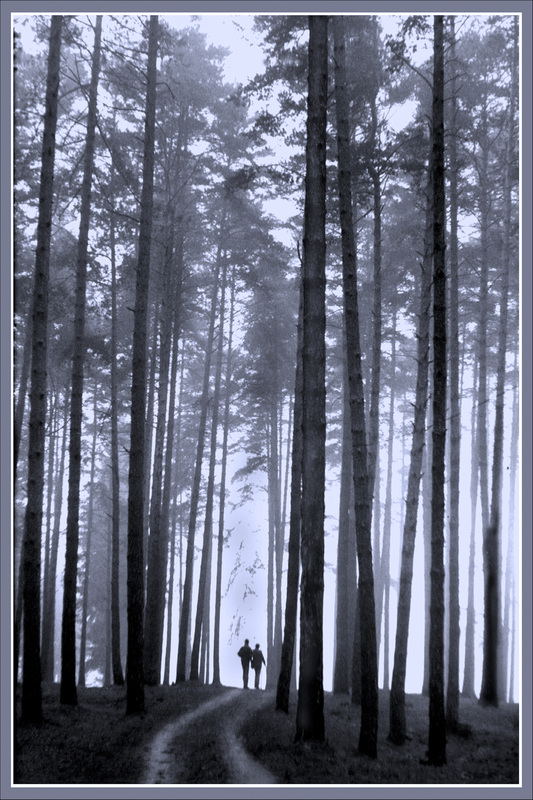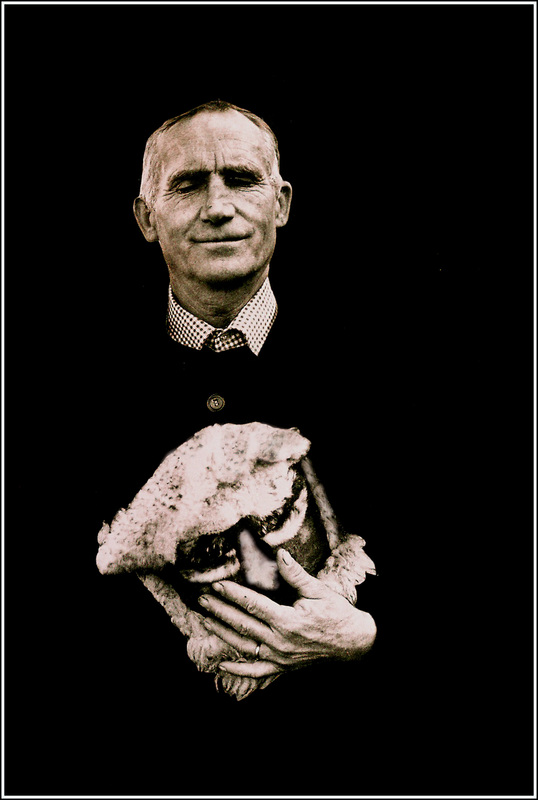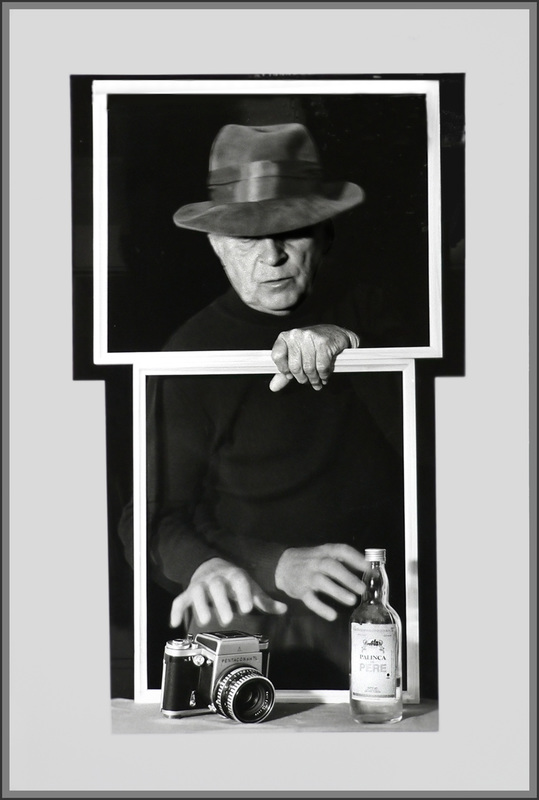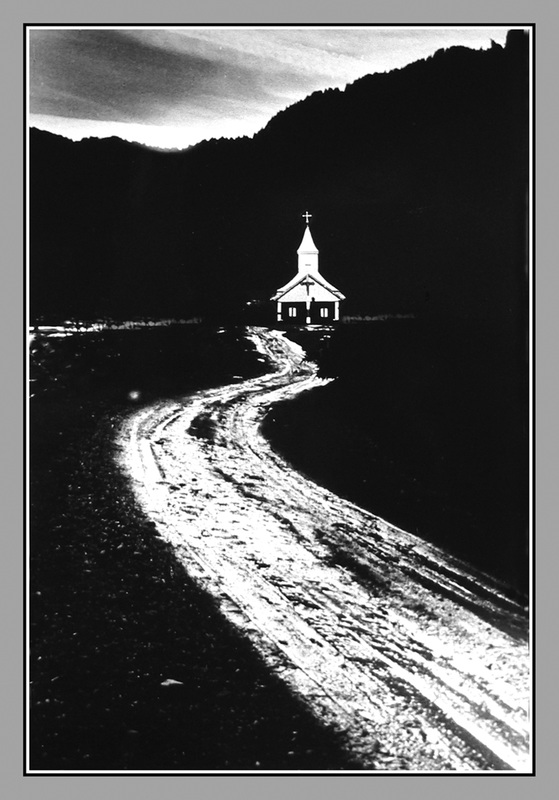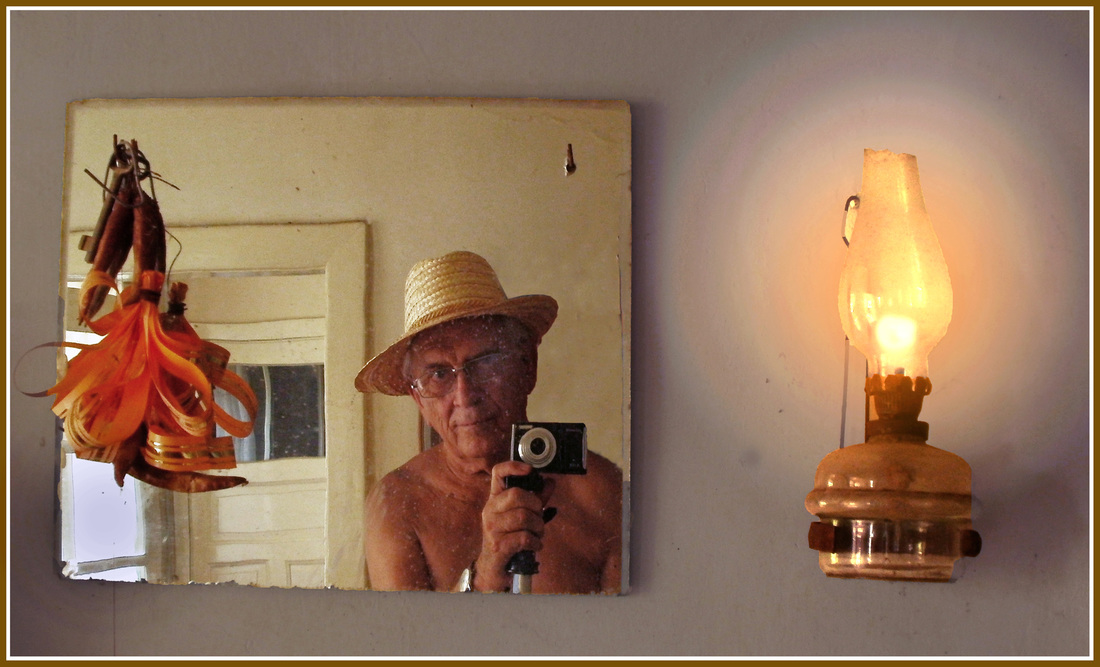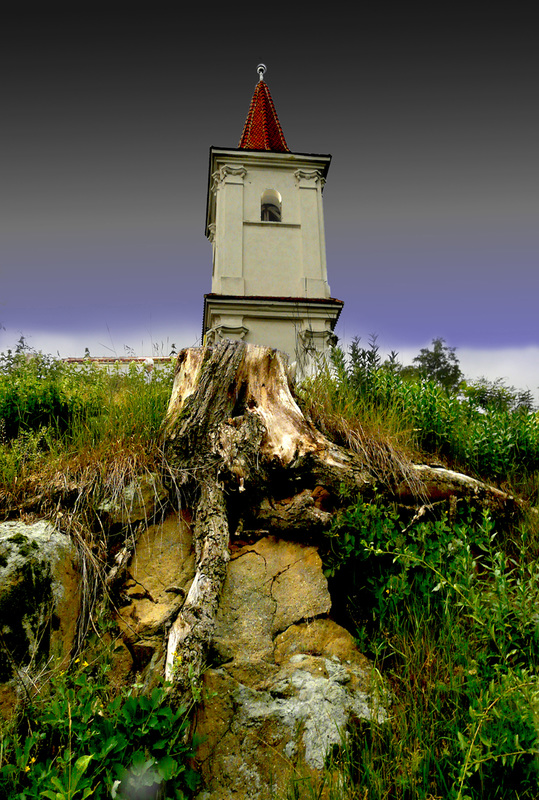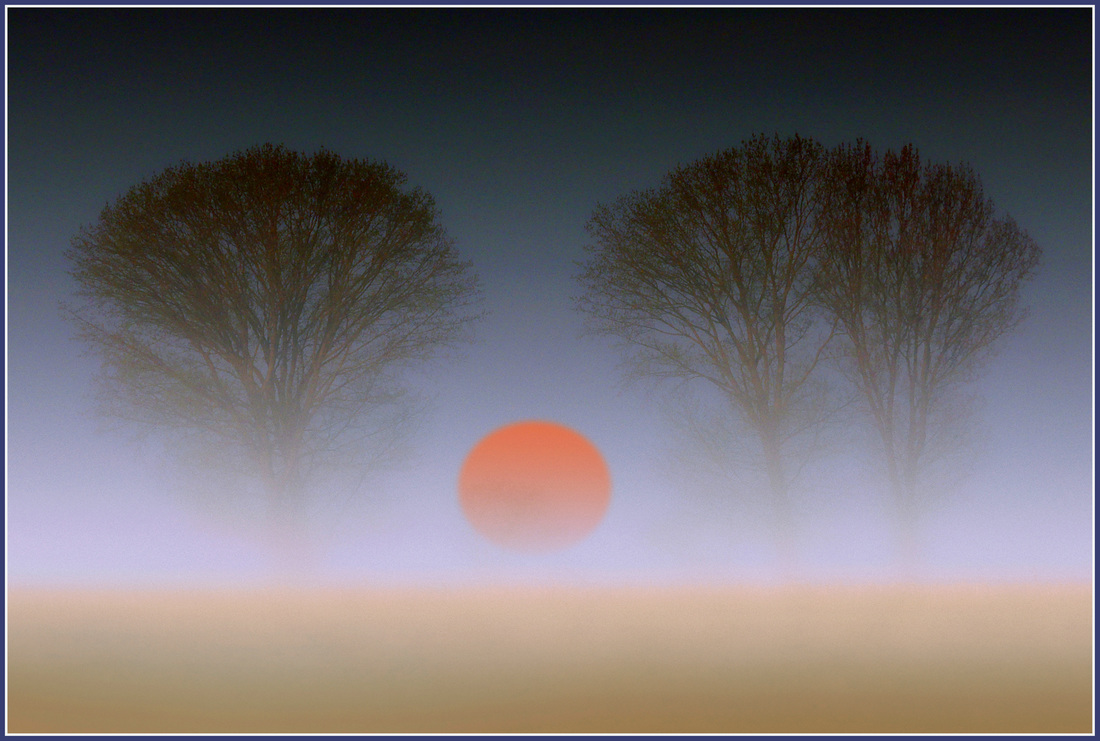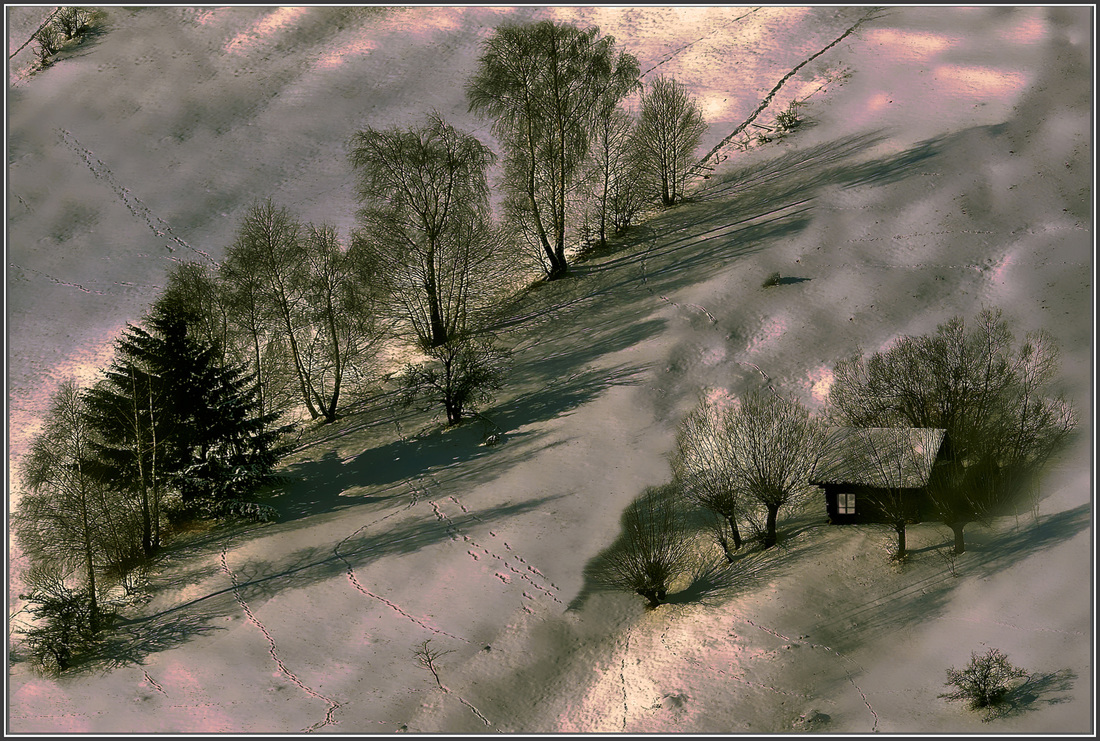Józsa István
VÉNIG LÁSZLÓ ALBUM
A Vénig - fotó*
|
Vénig László fotóművész a fotósok hazai és nemzetközi szövetségének elismert, kiváló tagja, munkássága magas szinten képvisel országot, kultúrát a nagyvilágban, bekapcsol a nemzetközi vérkeringésbe.
|
A Vénig—fotó sajátosságairól beszélgetünk.
--A témaválasztásról. Járta a természetet, a várost, a környéket A fotó a pillanat művészete, a megragadott pillanaté, de a Vénig--fotó nem riportkép, nem is egyszerűen dokumentum. Kezdetben nyilván, de a fotós a továbbiakban elrugaszkodik a témától. És ez teszi a Vénig--fotót egyedivé. Alkalmi kuriózumokat elkapni is már művészet, a természet csodásan működik, de itt a téma csak kiindulópont. Hogyan választja ki témáit?
--A természetjárás, nézelődés, ahol az ember jár, észrevenni a lényeget, a táj jellegét, szépségét és azt megragadni, rögzíteni, visszaadni úgy, hogy a néző ugyanabban az élményben részesüljön, mint az alkotó, nagyon nehéz. Milliók járják a világot és sok millió fotót készítenek, ennek csak egy töredéke ér többet egy képeslapnál. Tudatosan kell fényképezni, kivárni a pillanatot, a tárgy vagy személy-személyek elhelyezése a térben, ezek megvilágítása, természetes vagy műfénnyel, arányok, fény- árnyékegyensúly. Ezek a legkevesebbek, amit egy turista, aki fényképezik, kéne, hogy tudjon és akkor nem csalódna, amikor előveszi és nézegeti baráti körben a képeket.
Sokat jártam mint bakancsos turista a hegyeket sátorral, úgy, ahogy illik. Végig a Déli-Kárpátok, a Keleti-, a Nyugati-Kárpátok (Retezat 6-szor) hegyeit, völgyeit bejártam, sok fotót készítettem, de nem voltam megelégedve az eredménnyel. Nem akkor voltam ott és jó helyen, amikor kellett volna, rájöttem, ez nem az én fotóvilágom.
Azokat az élményeket, amiket láttam, amiket átéltem nem tudtam képben megfogalmazni. Meg kellett tanulni fekete-fehérben látni a világot, színek nélkül csak fehér és fekete tónusokban (akkor még a színes technika a keleti országokban nem volt hozzáférhető). Lassan rájöttem, hogy ez nem az én világom. A képről mindig hiányzott valami. Egy szép táj még nem minden (mint ahogy egy szép nő portréja sem az). Hiányzott a történés, a motiváció a képről, ami a nézőt megállítja. Technikailag tökéletesen kivitelezett fotó az egy „jó fotó”, de ez kevés, mai technikával akárki készíthet. Ilyen képekre a tudomány, a divat, reklám világában van szükség. A riportképeket, a dokumentáris képeket szintén meghagyom azoknak, akik erre hivatottak és jobban csinálják, hisz ott vannak mindenütt. Ezeket a képeket nem szabad manipulálni, legfeljebb retusálni, színjavitást végezni rajta, stb.
A pillanat művészetével csak annyiban értek egyet, hogy a kép rögzítése egy pillanat alatt történik, amit én, hogy úgymond nyersanyagnak használok a majdani képalkotáshoz. Sok mindent lefotózok: tájat, tárgyakat, embereket, arcokat, állatokat, virágot, fellegeket, naplementét, rovarokat, szituációkat, stb., stb. Ezeket elraktározom és a későbbi ötleteimhez, amit mindig a mondanivaló határoz meg, felhasználom.
Fiatal koromban festettem. Volt egy rajztanárom Tasnádon, Keresztesy Sámuel, iparművész. Ő biztatott és segített egy darabig. Elköltöztünk Tasnádról (1948). Képeslapokat, szentképeket kezdtem másolni pénzért. Tudtam, hogy ez nem művészet, abba is hagytam. 1959-60-as időben kezdett népszerű lenni a fotózás. Megjelentek fotószakkönyvek, albumok, híres magyar fotósoktól, szakíróktól. Olvasni, nézegetni kezdtem ezeket és ekkor választottam a fotót, mint kifejezőeszközt. Először is a fotótechnikát kellett elsajátítanom (film, hívás, pozitív technika, nagyítás, takarás, retusálás), mert tudtam, hogy e nélkül nem lehet alkotni. Soha nem voltam megelégedve az elkészült fotóval. Rájöttem, hogy nagyítás közben lehet ezeket a fotókat manipulálni (takarással, 2-3 filmről 1 kép készítése, stb.). Ez akkor még új volt nálunk. Sok fotópályázatot nyertem ebben az időben. 1963-ban felkértek, hogy lépjek be a Román Fotóművészek Szövetségébe (AAFR). 10 képet kértek tőlem kiállítási méretben (30 x 40 cm). Ezeket állandóan fel kellett tölteni újakkal. Ők válogatták és állították össze az anyagot külföldi kiállításokra. Mi egyénileg nem küldhettünk, hiába kaptam én is a meghívókat.
Én nem választom a témát, nincs kedvenc műfajom a művészfotón belül, sokszor maga az élet kínálja a témát. Sok régi ötletemet, amit akkor lehetetlen volt elkészítenem, a technikai korlátok miatt, most előveszem. A digitális fotózás tág teret nyújt az alkotáshoz. Nincs lehetetlen és ezért én alkotom a fotókat. A határ a fantázia és a jóizlés. Sajnos sokan még az igen tisztelt zsűritagok közt is akad olyan, aki még nem vette észre, hogy a digitális fotózás a fotóművészeten belül új műfajt teremtett. Ez a műfaj hasonlít a képzőművész alkotói tevékenységéhez, aki az egyénisége, tehetsége, látásmódja által átszűrt alkotást prezentálja a nézőnek. Nem a természetet másolja, csak annak a lényegét, kidomborítva a kép mondanivalóját.
Természetet másolni hiú ábránd, az olyan csodálatos. Én olyan képeket igyekszek alkotni, készíteni, amely egyszerű és kevés összetevőből épül és alátámasztja a mondanivalót. A kép minél egyszerűbb, annál érthetőbb. A kép címe szerintem fontos, segíti a nézőt, elindítja. Már az is képcím, ha azt írjuk alá, hogy „Cím nélkül” – itt a nézőre van bízva, hogy értelmezze az alkotást.
Kevés képet alkotok az ötvenvalahány év alatt, amióta fotózok, kb. 150 – 200 fotót vállalok magaménak, de ezek bejárták a fél világot. Szeretem megméretni magam, fotópályázatokon részt venni, úgy belföldön, mint külföldön. Egyéni kiállítást ritkán rendezek, csak ha meghívnak vagy jubilálok, kerek évfordulók alkalmával.
--Ha portréról, tájképről van szó, sokszor egyértelmű -- de itt a műfaj a montázs lesz. Hogyan, mitől függően alakulnak a montírozás szempontjai?
--Mint ahogy a képzőművészeti irány állandóan változik, úgy a fotóművészet is állandó változáson megy keresztül. Alig 150 év alatt nagy utat tett meg. Ha megnézzük nagyszüleink fotóit, a laikus is észreveszi a különbséget. Merev tartás, a mozdulat, a gesztus hiánya, stb. Egy mai portré sokkal közvetlenebb, sokkal természetesebb.
Fotómontázs = több képrészlet összevágása egy ötlet alapján, a mondanivaló érdekében. Kiegészíti a képet, megerősíti a kép értékét. Sokszor a háttér csak alap, amin a fő téma nyugszik. Én sokat használom a montázst. Sok gyenge képet, amiről hiányzik sokszor a lényeg, meg lehet menteni. Pl. egy szép táj, minden megvan, előtér (virágok) patak, kígyózó vonala (ami a mélységet adja a képnek), háttérben ködbe vesző hegyvonulat. Ez mind megvan, de van egy sima, jellegtelen világos ég. Ilyenkor előveszem a korábban elraktározott fellegképeket és kiválasztom azt, amelyik ide illik, mert nem mindegy. A felhő és a táj megvilágítása szinkronban kell legyen, bárányfelhő, viharfelhő, stb. Ezt jó érzékkel kell kiválasztani. A néző nem szabad, hogy észrevegye, neki tökéletes élményt kell nyújtani. Ez csak egyszerű példa, ha tökéletesen sikerül: ez már alkotás. A másik szituáció, amikor több van a képen (autó, fa, személy, stb.), ami nem illik oda, zavar, el kell tüntetni. A Photoshoppal mindent meg lehet oldani, csak azt kell tudni, hogy mi a több.
A montírozást csak akkor használom, ha szükséges és erősíti a kép mondanivalóját, mert ez csak egy a sok lehetőség közül.
Nem probléma pl. színes képről fekete fehéret, vagy szépiát készíteni, de csak akkor, ha a kép előnyére válik, amikor a fehér, a szürke, a fekete kifejezőbb, drámaibb, többet mond. A szépia is lehet kifejező eszköz, a régi képeket juttatja eszünkbe, a megsárgult képeket, nagyszüleink fotóit. A Photoshop rengeteg szűrőprogrammal is rendelkezik, ezt használva különféle hatást lehet elérni. Fotó mint festmény, ha tudatosan a kifejezés érdekében használjuk, nagyon hatásos lehet. Nekem is van ilyen képem. A bemozdulás (ilyen szűrő is van) a mozgást fejezi ki, a dinamikát, pl. a tánc dinamikáját. Csoportos tánc (néptánc) fotózáskor bemozdulnak a táncosok, általában, de van a táncosok közt olyan személy, akit pont a mozgás holtpontjában fotóztunk, ő tűéles. Jó ha van a képen egy ilyen éles, stabil pont, ahol a tekintetünk megnyugszik, ez erősíti a mozgás élményét a nézőben.
Szintén ezek a szűrők tartalmaznak: grafikai hatást, fekete-fehér (ceruza, szén, stb), relief hatás.
Szoktam ezeket a szűrőket használni, ha ezzel javítok a kép művészi értékén, de vigyázva, nem öncélúan.
A csendélet, rengetek lehetőség van ebben a műfajban. A régi nagyoktól is lehet példát venni, de nem másolni. Nem könnyű műfaj. Újat alkotni, meghökkentőt, még nehezebb. Nekem sikerült és ez lett 2012. év legjobb fotója, a címe „El fugitivo”. Röviden leírva: csendéletet ábrázol körtékkel, berámázva, fölakasztva a falra. Egy körte kiesik a képből, rámán kívül esik a semmibe, de ahonnan kiesett hiányzik, megvan a helye, a kiesett körte fehér foltja.
Összesen ha van 4-5 csendélet-képem.
--Nem a pillanat költészetéről van tehát szó -- a Vénig--fotó folyamat, úgy képszérűsít teret--időt, hogy az illető tájegység karakterét tudja megragadni. A rögzített részletek indítják ezt a folyamatot, vagy előzetes gondolati konstrukcióhoz keres témát, témákat?
--Mivel én nem dokumentálni akarok a képeimmel, megengedhetem magamnak, hogy szabadon alkothassak. Először általában van az ötlet. Van egy füzetem, legtöbbször lerajzolom és rajzolás közben jönnek az ötletek. Általában az elsőnél szoktam megmaradni, mert sokszor túlmagyarázom a mondanivalót, és ez nem jó, mivel a szemlélőnek, nézőnek is kell a sikerélmény. Igen, értem miről van szó, mit akar velem közölni a szerző. A témakereséssel úgy vagyok, és azt hiszem, más is, hogy általában nincs valami ötlet, csak úgy lézeng az ember céltalanul. Az is megtörtént, hogy a helyszínen a szituáció, az élmény szüli az ötletet. Egy példa: szőlőmetszés közben pont egy madárijesztő mellett dolgoztam (t.i. a tavalyról maradt ott a seregélyek riasztására, mert nagy kárt csinálhatnak az érett szőlőben), mikor egy sugármeghajtású, csillogó repülőgép húzott el felettem. Ügyesen összekombinálva már meg is volt a címe a képnek: „Madárijesztő”. Van egy kis humor, egy kis ötlet, csak meg kell oldani. Én a képeimmel egyszerű, mindennapi témákat, szituációkat prezentálok. Minden képem egy mese – mondta egy művészettörténész-nő (dr. Novicov, 2010), a nagyváradi Életmű-kiállításom megnyitóján.
--A módszer itt az, hogy tulajdonképpen több képet helyez egymásra, a néző pedig átlép egyik képnek a teréből a másikba. Az alkotó felől nézve: honnan indul ez a folyamat?
--A kép alkotó elemeit úgy helyezem egymásra, egymás mellé, fölé, stb., hogy az összhatás ne legyen félreérthető, csak azok a képelemek legyenek jelen, ami fontos a mondanivaló érdekében. Ez a folyamat indulhat egy ötletből, amit meg kell oldani. Általában több irányból szoktam megközelíteni egy adott témát és ezekből kiválasztom, amit a legjobb megoldásnak tartok. Igényesnek kell lenni, csak olyan képekkel jelentkezek belföldi vagy nemzetközi kiállításokra, pályázatokra, amik versenyképesek, szerintem. Azokat a képeket, amelyeket országos vagy nemzetközi válogatáson sikerrel szerepeltek, nyugodtan vállalom.
A kiállításokról rengeteg fotóalbum, katalógus van a birtokomban, a világ minden tájáról. Ezeket nézegetve tudhatom, hogy mi történik a nemzetközi fotóvilágban. Mi az új irányzat? Hol tart a technika? stb. Nem szabad leállni, mint általában minden művészet, a fotó is változik.
Ha nincs mondanivalóm, akkor hallgatok, nem szeretek fecsegni, ezért nem vagyok egy termékeny fotós. Az egyéni kiállításokról az a véleményem, hogy van egy 30-40 képből álló anyagom és azt 10-20 helyen bemutatom, az azt jelenti, hogy ennyi és ennyi egyéni kiállításom volt. Ezekkel én nem versenyzek. Az 50 év, amióta fotózok, összesen ha volt 10-15 egyéni kiállításom, viszont ezeknek a fotóknak kb. 90 %-a már volt valahol zsűrizve, kiállítva, díjazva, reprózva katalógusba.
Dimenzió – térbeli kiterjedés. Mivel a festészet, grafika, fotó általában csak két dimenzióval rendelkezik (magasság, szélesség) a harmadik, a mélység (vastagság) nincs. Viszont szükség van rá (az egyiptomiak csak egy síkba rajzoltak). Ezért van perspektíva – távlati ábrázolás „térbeli tárgyak síkban való, de térbeliség látszatát keltő ábrázolási mód”. A camera obscura (lyukkamera) által vetített képen vették észre, hogy a távolodó tárgyak kisebbek, a párhuzamos vonalak összefutnak és a mélység (távolság) érzetét keltik. A mai nézőnek ez már természetes.
Dimenzió (3D) átlépni a harmadik dimenzióba, sok fantasztikus filmnek a tárgya „tér-idő”. Engem is megérintett, hogy lehet képletesen átlépni a teret – időt, csakis fikció által. Van egy bizonyos kapu, átlépve, egy más korban találjuk magunkat (történelmi, geológiai kor, stb.) Erről a bizonyos kapuról már van fogalmunk, láttunk a filmekben különféle megoldásokat.
Az én egyik fotómon is van az a bizonyos fantázia-kapu. Fiatal pár, fiú-lány, lezserül öltözve a mai kornak megfelelően átlépi ezt a kaput, egy középkori város macskaköves utcájába lépnek – régi cégtáblák, egy-két alak, stb. Ez a régi utca különös technikával, meseszerű. Itt vége a sztorinak. Hogyan reagálnak ebben a szituációban a fiatalok, az a nézőre van bízva.
--Kerek évfordulókon rendszerint összegez az ember -- Ön hogyan osztaná szakaszokra, esetleg korszakokra pályáját?
--Kb. 50 éve fotózok tudatosan. Nem lehet összehasonlítani egy régi fotóst egy mai kezdő fotóssal, aki digitális technikával kezd fotózni. Akkor először meg kellett tanulni a fotózás technikáját, a fényképezőgép kezelését, különféle trükköket az előhívásnál, a nagyításnál, stb. A hivatásos fotósok, akik ebből éltek, féltékenyen őrizték műhelytitkukat, konkurenciát láttak az amatőr fotósok tevékenységében. Kontárnak nevezték az amatőröket, néha fel is jelentették az adóhivatalnál, hogy illegális tevékenységet folytat (velem is megtörtént). Egy mai kezdő a fent említetteket kihagyhatja, a technikai részt elvégzi helyette az elektronika. Csakis a tehetségén múlik az eredmény, a gyors siker.
Ha szakaszokra bontanám ezt az 50 évet:
Első 5-10 év a tanulás éve volt. Sokat olvastam és nézegettem képzőművészek által írt könyveket, tanulmányokat (pl. Nagy Pál „Barangolás a képzőművészetben”, Lyka Károly „Kis könyv a művészetről”, - „Képzőművészet iskolája” I-II kötet, stb.) Én mindig tudtam, hogy van fotóművészet, ahogy van filmművészet, habár még nem mindenki hitt ebben.
Második szakasz, az útkeresés. Mivel a fotográfiának is több ága van és én tudtam melyiket szeretném művelni (a művészfotót), hát ebből az irányból indultam. Van egy füzetem rajzokkal, ötletekkel, itt érlelem a végleges képet, ügyelve a lehetőségeimre, amelyek korlátozottak, hiszen röghöz vagyok kötve, nem járom a világot. Képeim mondanivalóját a környezetemből merítem: emberek, apró történések, szituációk, tájak, az emberek viszonya a környezethez, csendélet. Általában az ember minden képemen jelen van, ha nem is direkt, de a hatása a tájra észrevehető.
Nem lényeges, hogy mennyi idő alatt történik az alkotás folyamata, van úgy, hogy évek múlva előveszem egy régi ötletemet és befejezem.
A csendélet olyan műfaj, amit egy asztalon el lehet készíteni, csak nem mindegy, mit teszek az asztalra, hogyan helyezem el a tárgyakat. Talán 4-5 csendélet képem van. Ezek már digitális technikával készültek.
Innen kezdődik a harmadik korszakom: a digitális. Sajnos elég későn, mondhatom robbant be az életembe. Mint nyugdíjas nem is álmodhattam digitális kameráról, számítógépről, stb. Azonban a szerencse mellém szegődött, igaz elébe kellett menni. Röviden: az Ursus sörgyár országos pályázatot hirdetett a márka reklámozása céljából. Beneveztem, nyertem 1000 dollárt. Ebből lett az én digitális szerelésem (2005. – 75 éves)
Az új technika, új lehetőség, újabbnál újabb Photoshop programok jelentek meg. Lehet alkotni. Nincs határ, mint a képzőművészetben. A pályázatokon megjelent a digitális fotó.
Sokkal termékenyebb évek következtek, megvalósíthattam sok régi ötletemet. Lehet álmodni, alkotni. 2004-ben meghívtak a Nagyváradi Tavirózsa Fotóklub tagjának, ahol jelenleg is aktiválok. Képeim a klub kollekcióin belül kitűnően szerepelnek. „Léptek a fényben” című kollekció kb. 35 ország kiállítótermeiben nagy sikerrel szerepel.
Mivel közel áll hozzám a képzőművészet (valamikor festegettem), úgy gondolom, a fotóim ugyanazt a célt szolgálják, ugyanazt közvetítik, mint egy képzőművészeti alkotás. A városi ember kezdi elveszíteni természetes megfigyelőképességét, melyre régen nagy szüksége volt. Most általában a technika segítségével tájékozódik (TV, internet). A fotónak ez is célja, hogy tájékoztasson. De én továbbmegyek. Igyekszek valami történést, mesét beleszőni. A kép nézésekor a nézőben érzelmet kelteni.
Sokat számít, hogy honnan indul az ember, a családi háttér. Rendezett gyerekkorom volt. Szüleim, nagyszüleim csodálatos emberek voltak. Megtanultam elválasztani a jót a rossztól, mi az élet értelme, ha már vagyunk igyekezzünk valamit hagyni magunk után a képességeinkhez mérten. Szerencsémre a saját családomban ugyanez a hozzáállás, feleségem mindenben támogat, lányom, vejem, unokáim - úgyszintén. Az alkotáshoz nyugodt, kiegyensúlyozott háttér kell. Engem a fotózás tart, hogy úgy mondjam, karban, úgy mentális, mint fizikailag.
--Mit tart legnagyobb szakmai sikereinek?
--Igen, a siker nagyon fontos. Az ösztönzi, ösztökéli az elkötelezett embert az alkotásra. A sikerek igazolják, hogy jó az irány, ezért kell a megmérettetés. Pályázatokon szakzsűri értékelje, minősítse a képet. Egy-egy nemzetközi pályázatra beküldenek 2000-3000 fotót is. Ebből a zsűri kiválaszt 80-100 képet, ami a falra kerül. Tovább a 80-100 képből választják a 10-15 díjazott képet. Már az is siker, ha egy-két kép a falra kerül.
Én fotóamatőr vagyok, amatőr, aki profi szintre emelte ezt a tevékenységét hosszú éveken keresztüli munkával. Ma nagyon sok önjelölt fotóművész van mindenütt. Nem nehéz ma szép képet csinálni, kiállítani, a laikus nézőt elkápráztatni. Ilyen kiállítás rengeteg van. A fotóművész címet csak az használhatná, aki tagja a román vagy más fotóművészeti szervezetnek. Nem szabad a művész-címet banalizálni, azt ki kell érdemelni.
Én szakmai sikeremnek tartom, hogy az 50 évből, amióta fotózok, 40 éve ott vagyok a Román Fotóművészek Szövetségének elismert tagjai közt.
Továbbá siker a sok cím, pl.
- Distinctia de Excelentă a Asociatiei Artistilor Fotografi din Romania (E.AAFR – 2010), Diploma de onoare al AAFRomania
- Nemzetközi sikeremnek tartom, hogy tagja vagyok a nemzetközi fotóművészek szövetségének (Artist FIAP – Bern – 1976. január 18)
- Hogy tulajdonosa vagyok: Col. OMER-GOLD PLAQUE – World Master Trophy – 1996
- Diplome d’honneur „Recontres Photographiques Internationales de Guyant” a Douai, 18 Jullet 1995
- Salonul National Fotografia Anului – editia a II-a, 2012 „Trofeul Fotografia Anului” = „Az év legjobb fotója”: „El fugitivo”
- Diploma de Excelenta Municipiului Carei
Nem akarom itt felsorolni mind a kb. 100-120 diplomámat, arany-, ezüst-, bronzérmeimet.
Mindez nem dicsekvés, hanem tény, önbecsülés.
A meditáció szintjére emelt csendes szemlélődés-- ez a Vénig—fotó, ez Vénig László alkotói magatartása. És nagy gondolatot tárgyal ez a meditáció, a művészetek örök témáját. A vizuális nyelv alkotó embere szemlélő szerepet tölt be a maga korvalóságában, vagy igenis része, nagyon is alakítója annak?
Vénig László nemzetközi rangú munkássága a történet—formázás időtálló példája.
*Az utolsó beszélgetés Vénig Lászlóval. 2014
--A témaválasztásról. Járta a természetet, a várost, a környéket A fotó a pillanat művészete, a megragadott pillanaté, de a Vénig--fotó nem riportkép, nem is egyszerűen dokumentum. Kezdetben nyilván, de a fotós a továbbiakban elrugaszkodik a témától. És ez teszi a Vénig--fotót egyedivé. Alkalmi kuriózumokat elkapni is már művészet, a természet csodásan működik, de itt a téma csak kiindulópont. Hogyan választja ki témáit?
--A természetjárás, nézelődés, ahol az ember jár, észrevenni a lényeget, a táj jellegét, szépségét és azt megragadni, rögzíteni, visszaadni úgy, hogy a néző ugyanabban az élményben részesüljön, mint az alkotó, nagyon nehéz. Milliók járják a világot és sok millió fotót készítenek, ennek csak egy töredéke ér többet egy képeslapnál. Tudatosan kell fényképezni, kivárni a pillanatot, a tárgy vagy személy-személyek elhelyezése a térben, ezek megvilágítása, természetes vagy műfénnyel, arányok, fény- árnyékegyensúly. Ezek a legkevesebbek, amit egy turista, aki fényképezik, kéne, hogy tudjon és akkor nem csalódna, amikor előveszi és nézegeti baráti körben a képeket.
Sokat jártam mint bakancsos turista a hegyeket sátorral, úgy, ahogy illik. Végig a Déli-Kárpátok, a Keleti-, a Nyugati-Kárpátok (Retezat 6-szor) hegyeit, völgyeit bejártam, sok fotót készítettem, de nem voltam megelégedve az eredménnyel. Nem akkor voltam ott és jó helyen, amikor kellett volna, rájöttem, ez nem az én fotóvilágom.
Azokat az élményeket, amiket láttam, amiket átéltem nem tudtam képben megfogalmazni. Meg kellett tanulni fekete-fehérben látni a világot, színek nélkül csak fehér és fekete tónusokban (akkor még a színes technika a keleti országokban nem volt hozzáférhető). Lassan rájöttem, hogy ez nem az én világom. A képről mindig hiányzott valami. Egy szép táj még nem minden (mint ahogy egy szép nő portréja sem az). Hiányzott a történés, a motiváció a képről, ami a nézőt megállítja. Technikailag tökéletesen kivitelezett fotó az egy „jó fotó”, de ez kevés, mai technikával akárki készíthet. Ilyen képekre a tudomány, a divat, reklám világában van szükség. A riportképeket, a dokumentáris képeket szintén meghagyom azoknak, akik erre hivatottak és jobban csinálják, hisz ott vannak mindenütt. Ezeket a képeket nem szabad manipulálni, legfeljebb retusálni, színjavitást végezni rajta, stb.
A pillanat művészetével csak annyiban értek egyet, hogy a kép rögzítése egy pillanat alatt történik, amit én, hogy úgymond nyersanyagnak használok a majdani képalkotáshoz. Sok mindent lefotózok: tájat, tárgyakat, embereket, arcokat, állatokat, virágot, fellegeket, naplementét, rovarokat, szituációkat, stb., stb. Ezeket elraktározom és a későbbi ötleteimhez, amit mindig a mondanivaló határoz meg, felhasználom.
Fiatal koromban festettem. Volt egy rajztanárom Tasnádon, Keresztesy Sámuel, iparművész. Ő biztatott és segített egy darabig. Elköltöztünk Tasnádról (1948). Képeslapokat, szentképeket kezdtem másolni pénzért. Tudtam, hogy ez nem művészet, abba is hagytam. 1959-60-as időben kezdett népszerű lenni a fotózás. Megjelentek fotószakkönyvek, albumok, híres magyar fotósoktól, szakíróktól. Olvasni, nézegetni kezdtem ezeket és ekkor választottam a fotót, mint kifejezőeszközt. Először is a fotótechnikát kellett elsajátítanom (film, hívás, pozitív technika, nagyítás, takarás, retusálás), mert tudtam, hogy e nélkül nem lehet alkotni. Soha nem voltam megelégedve az elkészült fotóval. Rájöttem, hogy nagyítás közben lehet ezeket a fotókat manipulálni (takarással, 2-3 filmről 1 kép készítése, stb.). Ez akkor még új volt nálunk. Sok fotópályázatot nyertem ebben az időben. 1963-ban felkértek, hogy lépjek be a Román Fotóművészek Szövetségébe (AAFR). 10 képet kértek tőlem kiállítási méretben (30 x 40 cm). Ezeket állandóan fel kellett tölteni újakkal. Ők válogatták és állították össze az anyagot külföldi kiállításokra. Mi egyénileg nem küldhettünk, hiába kaptam én is a meghívókat.
Én nem választom a témát, nincs kedvenc műfajom a művészfotón belül, sokszor maga az élet kínálja a témát. Sok régi ötletemet, amit akkor lehetetlen volt elkészítenem, a technikai korlátok miatt, most előveszem. A digitális fotózás tág teret nyújt az alkotáshoz. Nincs lehetetlen és ezért én alkotom a fotókat. A határ a fantázia és a jóizlés. Sajnos sokan még az igen tisztelt zsűritagok közt is akad olyan, aki még nem vette észre, hogy a digitális fotózás a fotóművészeten belül új műfajt teremtett. Ez a műfaj hasonlít a képzőművész alkotói tevékenységéhez, aki az egyénisége, tehetsége, látásmódja által átszűrt alkotást prezentálja a nézőnek. Nem a természetet másolja, csak annak a lényegét, kidomborítva a kép mondanivalóját.
Természetet másolni hiú ábránd, az olyan csodálatos. Én olyan képeket igyekszek alkotni, készíteni, amely egyszerű és kevés összetevőből épül és alátámasztja a mondanivalót. A kép minél egyszerűbb, annál érthetőbb. A kép címe szerintem fontos, segíti a nézőt, elindítja. Már az is képcím, ha azt írjuk alá, hogy „Cím nélkül” – itt a nézőre van bízva, hogy értelmezze az alkotást.
Kevés képet alkotok az ötvenvalahány év alatt, amióta fotózok, kb. 150 – 200 fotót vállalok magaménak, de ezek bejárták a fél világot. Szeretem megméretni magam, fotópályázatokon részt venni, úgy belföldön, mint külföldön. Egyéni kiállítást ritkán rendezek, csak ha meghívnak vagy jubilálok, kerek évfordulók alkalmával.
--Ha portréról, tájképről van szó, sokszor egyértelmű -- de itt a műfaj a montázs lesz. Hogyan, mitől függően alakulnak a montírozás szempontjai?
--Mint ahogy a képzőművészeti irány állandóan változik, úgy a fotóművészet is állandó változáson megy keresztül. Alig 150 év alatt nagy utat tett meg. Ha megnézzük nagyszüleink fotóit, a laikus is észreveszi a különbséget. Merev tartás, a mozdulat, a gesztus hiánya, stb. Egy mai portré sokkal közvetlenebb, sokkal természetesebb.
Fotómontázs = több képrészlet összevágása egy ötlet alapján, a mondanivaló érdekében. Kiegészíti a képet, megerősíti a kép értékét. Sokszor a háttér csak alap, amin a fő téma nyugszik. Én sokat használom a montázst. Sok gyenge képet, amiről hiányzik sokszor a lényeg, meg lehet menteni. Pl. egy szép táj, minden megvan, előtér (virágok) patak, kígyózó vonala (ami a mélységet adja a képnek), háttérben ködbe vesző hegyvonulat. Ez mind megvan, de van egy sima, jellegtelen világos ég. Ilyenkor előveszem a korábban elraktározott fellegképeket és kiválasztom azt, amelyik ide illik, mert nem mindegy. A felhő és a táj megvilágítása szinkronban kell legyen, bárányfelhő, viharfelhő, stb. Ezt jó érzékkel kell kiválasztani. A néző nem szabad, hogy észrevegye, neki tökéletes élményt kell nyújtani. Ez csak egyszerű példa, ha tökéletesen sikerül: ez már alkotás. A másik szituáció, amikor több van a képen (autó, fa, személy, stb.), ami nem illik oda, zavar, el kell tüntetni. A Photoshoppal mindent meg lehet oldani, csak azt kell tudni, hogy mi a több.
A montírozást csak akkor használom, ha szükséges és erősíti a kép mondanivalóját, mert ez csak egy a sok lehetőség közül.
Nem probléma pl. színes képről fekete fehéret, vagy szépiát készíteni, de csak akkor, ha a kép előnyére válik, amikor a fehér, a szürke, a fekete kifejezőbb, drámaibb, többet mond. A szépia is lehet kifejező eszköz, a régi képeket juttatja eszünkbe, a megsárgult képeket, nagyszüleink fotóit. A Photoshop rengeteg szűrőprogrammal is rendelkezik, ezt használva különféle hatást lehet elérni. Fotó mint festmény, ha tudatosan a kifejezés érdekében használjuk, nagyon hatásos lehet. Nekem is van ilyen képem. A bemozdulás (ilyen szűrő is van) a mozgást fejezi ki, a dinamikát, pl. a tánc dinamikáját. Csoportos tánc (néptánc) fotózáskor bemozdulnak a táncosok, általában, de van a táncosok közt olyan személy, akit pont a mozgás holtpontjában fotóztunk, ő tűéles. Jó ha van a képen egy ilyen éles, stabil pont, ahol a tekintetünk megnyugszik, ez erősíti a mozgás élményét a nézőben.
Szintén ezek a szűrők tartalmaznak: grafikai hatást, fekete-fehér (ceruza, szén, stb), relief hatás.
Szoktam ezeket a szűrőket használni, ha ezzel javítok a kép művészi értékén, de vigyázva, nem öncélúan.
A csendélet, rengetek lehetőség van ebben a műfajban. A régi nagyoktól is lehet példát venni, de nem másolni. Nem könnyű műfaj. Újat alkotni, meghökkentőt, még nehezebb. Nekem sikerült és ez lett 2012. év legjobb fotója, a címe „El fugitivo”. Röviden leírva: csendéletet ábrázol körtékkel, berámázva, fölakasztva a falra. Egy körte kiesik a képből, rámán kívül esik a semmibe, de ahonnan kiesett hiányzik, megvan a helye, a kiesett körte fehér foltja.
Összesen ha van 4-5 csendélet-képem.
--Nem a pillanat költészetéről van tehát szó -- a Vénig--fotó folyamat, úgy képszérűsít teret--időt, hogy az illető tájegység karakterét tudja megragadni. A rögzített részletek indítják ezt a folyamatot, vagy előzetes gondolati konstrukcióhoz keres témát, témákat?
--Mivel én nem dokumentálni akarok a képeimmel, megengedhetem magamnak, hogy szabadon alkothassak. Először általában van az ötlet. Van egy füzetem, legtöbbször lerajzolom és rajzolás közben jönnek az ötletek. Általában az elsőnél szoktam megmaradni, mert sokszor túlmagyarázom a mondanivalót, és ez nem jó, mivel a szemlélőnek, nézőnek is kell a sikerélmény. Igen, értem miről van szó, mit akar velem közölni a szerző. A témakereséssel úgy vagyok, és azt hiszem, más is, hogy általában nincs valami ötlet, csak úgy lézeng az ember céltalanul. Az is megtörtént, hogy a helyszínen a szituáció, az élmény szüli az ötletet. Egy példa: szőlőmetszés közben pont egy madárijesztő mellett dolgoztam (t.i. a tavalyról maradt ott a seregélyek riasztására, mert nagy kárt csinálhatnak az érett szőlőben), mikor egy sugármeghajtású, csillogó repülőgép húzott el felettem. Ügyesen összekombinálva már meg is volt a címe a képnek: „Madárijesztő”. Van egy kis humor, egy kis ötlet, csak meg kell oldani. Én a képeimmel egyszerű, mindennapi témákat, szituációkat prezentálok. Minden képem egy mese – mondta egy művészettörténész-nő (dr. Novicov, 2010), a nagyváradi Életmű-kiállításom megnyitóján.
--A módszer itt az, hogy tulajdonképpen több képet helyez egymásra, a néző pedig átlép egyik képnek a teréből a másikba. Az alkotó felől nézve: honnan indul ez a folyamat?
--A kép alkotó elemeit úgy helyezem egymásra, egymás mellé, fölé, stb., hogy az összhatás ne legyen félreérthető, csak azok a képelemek legyenek jelen, ami fontos a mondanivaló érdekében. Ez a folyamat indulhat egy ötletből, amit meg kell oldani. Általában több irányból szoktam megközelíteni egy adott témát és ezekből kiválasztom, amit a legjobb megoldásnak tartok. Igényesnek kell lenni, csak olyan képekkel jelentkezek belföldi vagy nemzetközi kiállításokra, pályázatokra, amik versenyképesek, szerintem. Azokat a képeket, amelyeket országos vagy nemzetközi válogatáson sikerrel szerepeltek, nyugodtan vállalom.
A kiállításokról rengeteg fotóalbum, katalógus van a birtokomban, a világ minden tájáról. Ezeket nézegetve tudhatom, hogy mi történik a nemzetközi fotóvilágban. Mi az új irányzat? Hol tart a technika? stb. Nem szabad leállni, mint általában minden művészet, a fotó is változik.
Ha nincs mondanivalóm, akkor hallgatok, nem szeretek fecsegni, ezért nem vagyok egy termékeny fotós. Az egyéni kiállításokról az a véleményem, hogy van egy 30-40 képből álló anyagom és azt 10-20 helyen bemutatom, az azt jelenti, hogy ennyi és ennyi egyéni kiállításom volt. Ezekkel én nem versenyzek. Az 50 év, amióta fotózok, összesen ha volt 10-15 egyéni kiállításom, viszont ezeknek a fotóknak kb. 90 %-a már volt valahol zsűrizve, kiállítva, díjazva, reprózva katalógusba.
Dimenzió – térbeli kiterjedés. Mivel a festészet, grafika, fotó általában csak két dimenzióval rendelkezik (magasság, szélesség) a harmadik, a mélység (vastagság) nincs. Viszont szükség van rá (az egyiptomiak csak egy síkba rajzoltak). Ezért van perspektíva – távlati ábrázolás „térbeli tárgyak síkban való, de térbeliség látszatát keltő ábrázolási mód”. A camera obscura (lyukkamera) által vetített képen vették észre, hogy a távolodó tárgyak kisebbek, a párhuzamos vonalak összefutnak és a mélység (távolság) érzetét keltik. A mai nézőnek ez már természetes.
Dimenzió (3D) átlépni a harmadik dimenzióba, sok fantasztikus filmnek a tárgya „tér-idő”. Engem is megérintett, hogy lehet képletesen átlépni a teret – időt, csakis fikció által. Van egy bizonyos kapu, átlépve, egy más korban találjuk magunkat (történelmi, geológiai kor, stb.) Erről a bizonyos kapuról már van fogalmunk, láttunk a filmekben különféle megoldásokat.
Az én egyik fotómon is van az a bizonyos fantázia-kapu. Fiatal pár, fiú-lány, lezserül öltözve a mai kornak megfelelően átlépi ezt a kaput, egy középkori város macskaköves utcájába lépnek – régi cégtáblák, egy-két alak, stb. Ez a régi utca különös technikával, meseszerű. Itt vége a sztorinak. Hogyan reagálnak ebben a szituációban a fiatalok, az a nézőre van bízva.
--Kerek évfordulókon rendszerint összegez az ember -- Ön hogyan osztaná szakaszokra, esetleg korszakokra pályáját?
--Kb. 50 éve fotózok tudatosan. Nem lehet összehasonlítani egy régi fotóst egy mai kezdő fotóssal, aki digitális technikával kezd fotózni. Akkor először meg kellett tanulni a fotózás technikáját, a fényképezőgép kezelését, különféle trükköket az előhívásnál, a nagyításnál, stb. A hivatásos fotósok, akik ebből éltek, féltékenyen őrizték műhelytitkukat, konkurenciát láttak az amatőr fotósok tevékenységében. Kontárnak nevezték az amatőröket, néha fel is jelentették az adóhivatalnál, hogy illegális tevékenységet folytat (velem is megtörtént). Egy mai kezdő a fent említetteket kihagyhatja, a technikai részt elvégzi helyette az elektronika. Csakis a tehetségén múlik az eredmény, a gyors siker.
Ha szakaszokra bontanám ezt az 50 évet:
Első 5-10 év a tanulás éve volt. Sokat olvastam és nézegettem képzőművészek által írt könyveket, tanulmányokat (pl. Nagy Pál „Barangolás a képzőművészetben”, Lyka Károly „Kis könyv a művészetről”, - „Képzőművészet iskolája” I-II kötet, stb.) Én mindig tudtam, hogy van fotóművészet, ahogy van filmművészet, habár még nem mindenki hitt ebben.
Második szakasz, az útkeresés. Mivel a fotográfiának is több ága van és én tudtam melyiket szeretném művelni (a művészfotót), hát ebből az irányból indultam. Van egy füzetem rajzokkal, ötletekkel, itt érlelem a végleges képet, ügyelve a lehetőségeimre, amelyek korlátozottak, hiszen röghöz vagyok kötve, nem járom a világot. Képeim mondanivalóját a környezetemből merítem: emberek, apró történések, szituációk, tájak, az emberek viszonya a környezethez, csendélet. Általában az ember minden képemen jelen van, ha nem is direkt, de a hatása a tájra észrevehető.
Nem lényeges, hogy mennyi idő alatt történik az alkotás folyamata, van úgy, hogy évek múlva előveszem egy régi ötletemet és befejezem.
A csendélet olyan műfaj, amit egy asztalon el lehet készíteni, csak nem mindegy, mit teszek az asztalra, hogyan helyezem el a tárgyakat. Talán 4-5 csendélet képem van. Ezek már digitális technikával készültek.
Innen kezdődik a harmadik korszakom: a digitális. Sajnos elég későn, mondhatom robbant be az életembe. Mint nyugdíjas nem is álmodhattam digitális kameráról, számítógépről, stb. Azonban a szerencse mellém szegődött, igaz elébe kellett menni. Röviden: az Ursus sörgyár országos pályázatot hirdetett a márka reklámozása céljából. Beneveztem, nyertem 1000 dollárt. Ebből lett az én digitális szerelésem (2005. – 75 éves)
Az új technika, új lehetőség, újabbnál újabb Photoshop programok jelentek meg. Lehet alkotni. Nincs határ, mint a képzőművészetben. A pályázatokon megjelent a digitális fotó.
Sokkal termékenyebb évek következtek, megvalósíthattam sok régi ötletemet. Lehet álmodni, alkotni. 2004-ben meghívtak a Nagyváradi Tavirózsa Fotóklub tagjának, ahol jelenleg is aktiválok. Képeim a klub kollekcióin belül kitűnően szerepelnek. „Léptek a fényben” című kollekció kb. 35 ország kiállítótermeiben nagy sikerrel szerepel.
Mivel közel áll hozzám a képzőművészet (valamikor festegettem), úgy gondolom, a fotóim ugyanazt a célt szolgálják, ugyanazt közvetítik, mint egy képzőművészeti alkotás. A városi ember kezdi elveszíteni természetes megfigyelőképességét, melyre régen nagy szüksége volt. Most általában a technika segítségével tájékozódik (TV, internet). A fotónak ez is célja, hogy tájékoztasson. De én továbbmegyek. Igyekszek valami történést, mesét beleszőni. A kép nézésekor a nézőben érzelmet kelteni.
Sokat számít, hogy honnan indul az ember, a családi háttér. Rendezett gyerekkorom volt. Szüleim, nagyszüleim csodálatos emberek voltak. Megtanultam elválasztani a jót a rossztól, mi az élet értelme, ha már vagyunk igyekezzünk valamit hagyni magunk után a képességeinkhez mérten. Szerencsémre a saját családomban ugyanez a hozzáállás, feleségem mindenben támogat, lányom, vejem, unokáim - úgyszintén. Az alkotáshoz nyugodt, kiegyensúlyozott háttér kell. Engem a fotózás tart, hogy úgy mondjam, karban, úgy mentális, mint fizikailag.
--Mit tart legnagyobb szakmai sikereinek?
--Igen, a siker nagyon fontos. Az ösztönzi, ösztökéli az elkötelezett embert az alkotásra. A sikerek igazolják, hogy jó az irány, ezért kell a megmérettetés. Pályázatokon szakzsűri értékelje, minősítse a képet. Egy-egy nemzetközi pályázatra beküldenek 2000-3000 fotót is. Ebből a zsűri kiválaszt 80-100 képet, ami a falra kerül. Tovább a 80-100 képből választják a 10-15 díjazott képet. Már az is siker, ha egy-két kép a falra kerül.
Én fotóamatőr vagyok, amatőr, aki profi szintre emelte ezt a tevékenységét hosszú éveken keresztüli munkával. Ma nagyon sok önjelölt fotóművész van mindenütt. Nem nehéz ma szép képet csinálni, kiállítani, a laikus nézőt elkápráztatni. Ilyen kiállítás rengeteg van. A fotóművész címet csak az használhatná, aki tagja a román vagy más fotóművészeti szervezetnek. Nem szabad a művész-címet banalizálni, azt ki kell érdemelni.
Én szakmai sikeremnek tartom, hogy az 50 évből, amióta fotózok, 40 éve ott vagyok a Román Fotóművészek Szövetségének elismert tagjai közt.
Továbbá siker a sok cím, pl.
- Distinctia de Excelentă a Asociatiei Artistilor Fotografi din Romania (E.AAFR – 2010), Diploma de onoare al AAFRomania
- Nemzetközi sikeremnek tartom, hogy tagja vagyok a nemzetközi fotóművészek szövetségének (Artist FIAP – Bern – 1976. január 18)
- Hogy tulajdonosa vagyok: Col. OMER-GOLD PLAQUE – World Master Trophy – 1996
- Diplome d’honneur „Recontres Photographiques Internationales de Guyant” a Douai, 18 Jullet 1995
- Salonul National Fotografia Anului – editia a II-a, 2012 „Trofeul Fotografia Anului” = „Az év legjobb fotója”: „El fugitivo”
- Diploma de Excelenta Municipiului Carei
Nem akarom itt felsorolni mind a kb. 100-120 diplomámat, arany-, ezüst-, bronzérmeimet.
Mindez nem dicsekvés, hanem tény, önbecsülés.
A meditáció szintjére emelt csendes szemlélődés-- ez a Vénig—fotó, ez Vénig László alkotói magatartása. És nagy gondolatot tárgyal ez a meditáció, a művészetek örök témáját. A vizuális nyelv alkotó embere szemlélő szerepet tölt be a maga korvalóságában, vagy igenis része, nagyon is alakítója annak?
Vénig László nemzetközi rangú munkássága a történet—formázás időtálló példája.
*Az utolsó beszélgetés Vénig Lászlóval. 2014
The Vénig photo*
|
The photographer Vénig László is an appreciated and outstanding member of the national and international photographer community, his work represents country and culture in the world at a high level and is an important part of the international circulation.
|
We are discussing the characteristics of the Vénig photo.
- About the choice of your subjects. You have walked in nature, in the city, in the surroundings. The photograph is the art of the moment, of the captured moment, however the Vénig photo is not a report-photo and not even a simple document. Initially it obviously was, but the photographer departs from the subject. And that is what makes the Vénig photo unique. Capturing unique curiosities is already art, because nature has a wonderful way of working, but the subject is just a starting point here. How do you chose your subjects?
-- It is extremely difficult to walk in nature, to look around the places where people walk, to observe the essence, the character of the environment, its beauty and to capture that, and to transmit that in such a way that the viewer gets the same experience as the creator. Millions travel the world and take millions of photos but only a short fraction of these are worth more than a postcard. One needs to take photos consciously, to wait for the perfect moment when the placement, the lighting with natural or artificial light, the proportion of light-shadow of the object or person/people in space is correct. This is the least that a tourist who takes photos should be aware of and then he wouldn’t be disappointed when taking out and watching the photos with friends.
I have walked the mountains as a booted tourist with a tent, just as you are supposed to. All the mountains and valleys of the South-, Eastern- and Western Carpathians (the Retezat 6 times), I have made lots of photos, but I have never been satisfied with the results. I wasn’t in the right place at the right time, I realised that this wasn’t my photo-world.
I couldn’t capture in pictures all the experiences that I lived and that I saw. I had to learn to see the world in black and white, without colours, just in the shades of white and black (as in those times the coloured technique was not accessible in the Eastern countries). Slowly I realised that this wasn’t my world. There was always something missing from the photo. A beautiful landscape is not everything (just as the portrait of a beautiful woman is not everything either). The happening, the motivation, which makes the viewer stop, was missing from the photos. A technically perfect photo is a „good” photo, but that is not enough as with the techniques at hand today, anyone could do that. Such photos are needed in the world of science, fashion and advertisement. I also leave the report-photos and the documentary photos to those who are professionals and who are better than me because they are present everywhere. These photos mustn’t be manipulated, just maybe retouched or having some colour correction done on them.
I can only agree with the art of the moment to the extent that taking a photo is just a moment, that I will use as – so to say – raw material at the creation of the picture. I take the photos of all kinds of things: landscapes, objects, people, faces, animals, flowers, clouds, sunsets, insects, situations etc., etc. I store them and later I use them to fit my ideas which are always determined by the message I want to convey.
I used to paint while I was young. I had a drawing teacher in Tasnád, Keresztesy Sámuel who was a handicraft artist. He encouraged me and helped me for a while. Then we moved from Tasnád (1948). I started to copy postcards and icons for money. I knew this wasn’t art, so I stopped it. Taking photos became popular in 1959-60. Books on photography, albums by famous Hungarian photographers appeared. I started reading them and looking at them at that is when I chose photography as means of expressing my thoughts. First of all I had to learn the technique of photography (film, developing, positive technique, enlargement, covering, retouching) because I know that without that it is impossible to create. I have never been satisfied with the finished photo. I realised that these photos can be manipulated while enlargement (to make one photo from 2-3 films with covering etc.). That was new here then. I won lots of photo contests in those days. In 1963 I was asked to join the Association of Romanian Photographers (AAFR). They asked for 10 photos in exhibition size (30 x 40 cm). These needed to be replaced with new ones all the time. They chose and put together the material for foreign exhibitions. We couldn’t send any by ourselves despite the fact that I received personal invitations.
I don’t chose the topic, I don’t have a favourite genre within artistic photography, most of the times life itself offers the subject. I take out many old ideas that couldn’t be completed due to technical difficulties in the past. Digital photography offers a wide space to creation. Nothing is impossible and thus I create the photos. The borderline is imagination and good taste. Unfortunately there are many, even members of the jury who have not noticed yet that digital photography has become a distinct genre within photography. This genre is similar to the crative activity of the graphic artist, who presents the viewer the creation that has been filtered through his personality, talent and vision. He does not copy nature, just the essence of it, emphasizing the message of the picture.
Copying nature is just an illusion as it is so wonderful. I try to create photos that are built from a few simple elements and that transmits the message. The more simple a photo, the easier it is to understand. In my opinion the title of the photo is important as it helps the viewer, it starts his imagination. A title such as „Without title” is also important – as in such cases it is up to the viewer to interpret the work.
I have only made few photos in the fifty-something years that I have been taking photos, I call mine only about 150-200 photos, but they have travelled the world. I like to take part in photo contests both in the country and abroad. I rarely organize individual exhibitions, only when I am invited or when I have a jubileum.
- When talking about portraits or landscapes, it is often obvious – but in this case the genre is montage. What influences the criteria of the montage and in what way?
- As the direction of the graphic arts is always changing, photography is constantly changing as well. It has come a long way since its birth in 150 years. If we look at our grandparents’ photos, a layman can also see the differences. Rigid body, the lack of movements and gestures, etc. A portrait today is much more straight forward, much more natural.
Photomontage = the cutting of several photo segments based on an idea to serve a certain message. It completes the photo, it strengthens the value of the photo. In many cases the background is just the bases on which the main subject rests. I use this technique quite often. In this way many weak photos, which lack some kind of essence, can be rescued. For example, a beautiful landscape, we have everything: in the front flowers, the twisty line of a river (that gives the photo its depth), and in the background a mountain range disappearing in the fog. All of these are given, but there is a blunt, plain, light sky. In such cases I take out my old photos of clouds and I chose the one that best fits here, because it matters. The lighting of the cloud and of the landscape needs to be in synch, mackerel-sky, thunderhead etc. This needs to be chosen with good sense. The viewer must not observe this, he must get a perfect experience. This is only a simple example, which if perfect, becomes a work of art. The other case: when there is too much in the photo (car, tree, person, etc.), and that becomes disturbing so some things need to disappear. Everything can be done in Photoshop, one just has to know what is too much.
I only use mounting when it is absolutely necessary and it strengthens the message of the photo, as that is one of the many possibilities-
It is no problem to make for example a black and white photo of a coloured one or a sepia but only if that is to the advantage of the photo, when the white, grey and black are more expressive, when they transmit more. The sepia can become a means of transmitting the message, as it reminds of old photos, our grandparents’ photos. The Photoshop has many filters and using them we can achieve different effects. The photo as a painting, if consciously used in order to convey a message, can be extremely efficient. I have such pictures. The movement (there is such filter) expresses movement, dynamics, for example the dynamics of dancing. When taking photos of group dances (folk dances), the dancers move, but usually there is one person among the dancers who is captured in a still moment, and he is too bright. It is good to have such a bright, stable point in the photo, where our sight can rest, as this strengthens the experience of movement in the viewer.
These filters also contain: graphic effects, black and white (pencil, charcoal, etc.), relief effect.
I use these filters when I can improve the artistic value of the photo, but only cautiously, not selfishly.
Stillife, there are so many possibilities in this genre. We can follow the example of the great old photographers, but not copy them. It is not an easy genre. And it is even more difficult to create something new, astounding. I was able to do just that, and that became the best photo of the year 2012, the title „El fugitivo”. In short: it presents a stillife with pears, inframed and hung to the wall. A pear drops out from the picture, out of the frame, but it has its place frome where it fell out, the white spot of the pear.
I have only about 4-5 such stillife photos.
- So we are not talking about the poetry of the moment – the Vénig-photo is a process, it turns space and time into image in such a way that in the process it can capture the character of the given landscape. Do the previously recorded details start this process, or do you search subject(s) for previous mental constructions?
- As I don’t intend to document anything with my photos, I can allow myself to create freely. Usually the idea comes first. I have a notebook, I draw, and usually ideas come while drawing. I usually stick with the first one, because I tend to overexplain the message, which is not good because the viewer also must feel some sense of achievement. Yes, I understand what that is about, what the author wants to tell me. As far as finding a subject is concerned, I think, just like others, that usually there is no idea in the beginning, one just wonders about aimlessly. It did already happen that the situation, the experience gave birth to the idea on the spot. An example: I was working right next to a scarecrow while trimming grapes (as it was left there to scare away the starlings because they did a lot of damage in the ripe grapes), when a jet-propelled airplane flew above me. Combining these together, I already obtained a title to the photo: „Scarecrow”. There is a little humor, some idea, one just needs to resolve it. I present simple, everyday subjects through my photos. Every photo is a fairy-tale – said an art historian (dr. Novicov, 2010) at the opening of my Life work exhibition in Nagyvárad.
- The technique used here is in fact that you place one photo on the other, and the viewer steps from the space of one photo into the space of another. Looking at this from the point of view of the author: where does this process start from?
- I place the components of the photo on top of each other, next to each other etc. in such a way that the final result cannot be misunderstood, only those elements are present that are important for the message. This process can start from an idea that needs a solution. I usually approach a given subject from different directions and I chose the one that I consider to be the best solution. One needs to be exigent, so I only participate at national or foreign exhibitions and competitions with such photos that I consider to be competitive. Then I can assume those pictures that were successful in national and international competitions.
I have many photo albums, catalogues from all over the world. Looking at these I have an idea of what is going on in the international photo world. What is the new trend? What is new as far as technique is concerned? etc. One shouldn’t stop, as photography is constantly changing just like other art forms.
If I have nothing to say, I keep quiet, I don’t like to babble, that is why I am not a productive photographer. My opinion about individual exhibitions is that I have a material with about 30-40 photos and I present them in about 10-20 places and that means that I had so many individual exhibitions. I don’t want to compete with that. In the 50 years that I have been taking photos, I only had a maximum 10-15 individual exhibitions, but about 90% of these works have been juried, exhibited, rewarded or reproduced in a catalogue.
Dimension – spacial extention. As paintings, graphics and photos usually only have two dimensions (height and width), the third, depth (thickness) is not represented. Yet it is needed (the drawings of the Aegyptians were drawn in one dimension). That is why there is perspective – representation in perspective: „the way of presenting objects in one dimension, yet creating the appearance of space”. It has been noticed on photos projected by the camera obscura, that objects in the distance seem to be smaller, parallell lines meet and they create the feeling of depth (distance). This is already natural to the viewer of the present.
Dimension (3D), to pass into the third dimension, the subject of many sci-fi films is the „space-time”. I was also touched by this: how can one symbolically pass space and time, the only possibility is fiction. There is a certain gate, which if passed, we find ourselves in a different (historical, geological etc.) age. We have some kind of idea about this gate, we have seen several solutions for it in films.
One of my photos also show such a fantasy-gate. Young couple, boy-girl, wearing modern clothes, pass this gate and step on the cobbled street of a Middle Age city – old sign-boards, a few people, etc. This old street with this special technique is like a fairy tale. This is the end of the story. How does the young couple react in this situation? That is left to the viewers.
- One usually makes a sum-up on jubilees. – How would you divide Your career into stages or maybe periods?
- I’ve been taking photos consciously for 50 years now. It is impossible to compare an old photographer with a young beginner who starts photography with digital technique. Back then first you had to acquire the technique of taking photos, then how to maintain the camera, different tricks on developing and enlarging etc. Professional photographers, who made a living out of photography, kept all their secrets to themselves and saw competition in the activity of amateur photographers. They called the amateurs tinkers, sometimes they reported on them at the tax office, that they used to do illegal activities (this happened to me actually). A young photographer nowadays doesn’t experience any of the above, and the technical details are resolved by electronics. It is only up to his talent to achieve quick success.
If I were to divide these 50 years into periods:
The first 5-10 years were dedicated to studying. I used to read a lot, to look at books and studies written by artists (eg.: Pál Nagy: „Barangolás a képzőművészetben” Wondering in plastic arts, Károly Lyka: „Kis könyv a művészetről” Small book on arts, „Képzőművészet iskolája” The school of plastic arts vol. I-II., etc.). I always knew that photography was an art form, just as film was, but not everyone shared my belief.
Second period, finding my way. As photography has several branches and as I knew which I wanted to practice (artistic photography), I started from this direction. I have a notebook with drawings, ideas, this is where I mature a final picture taking into consideration my limited possibilities, as I am tight to this place, I do not travel the world. The message of my photos is taken from my environment: people, small stories, situations, places, the relation of people to their surroundings, stillife. People are usually present in my pictures, if not in a direct way, then their influence on the landscape is visible.
It is not important how long the period of creation is, it happens that I take out an old idea after several years and I finish it then.
Stillife is a genre that can be completed on a table, but it is important what one puts on the table, how the objects are placed. I have only about 4-5 stillives. These were made using the digital technique.
And that is the beginning of my third period: the digital. Unfortunately this blew into my life – so to say – quite late. As a retired man, I can only dream of a digital camera, computer, etc. However luck found me. In short: the beer factory Ursus announced a competition to advertise the brand. I applied and won 1,000 USD. That is how I was able to buy my digital equipment (in 2005 when I was 75).
The new technique means new possibilities, as there are newer and newer Photoshop programs. One can create. There are no limits, just as in plastic arts. The digital photo appeared in competitions, too.
The years that followed were much more productive, I could realize many of my older ideas. One can dream and create. In 2004 I was invited to become a member in the photo club „Nagyváradi Tavirózsa Fotóklub”, and I am still an active member there. My photos are successful as being part of the club’s collection. The collection entitled „Léptek a fényben” (Steps in light) has great success in the exhibition halls of about 35 countries.
As I am close to plastic arts (I used to paint in the past), I think that my photos serve the same goal, transmit the same message as a piece of plastic art. City people tend to lose their natural perceptibility that they had great need of in the past. Now they usually navigate with the help of technology (TV, Internet). The photo has the same goal, to inform. But I take one step further. I try to tell a story, a fairytale. To arouse some kind of feeling in the viewer when looking at a picture.
The family background means a lot in the life of a person. I had an ordered childhood. My parents, grandparents were wonderful people. I learnt how to differentiate the good from the bad, what was the meaning of life, if we exist, let’s try to leave something behind us according to our possibilities. Fortunately my family shares this kind of attitude, my wife supports me in everything, my daughter, my son-in-law and my grandchildren as well. One needs a calm, steady background. It is photography that keeps me fit – so to say – both mentally and physically.
- What do you consider to be your greatest successes?
- Well, yes, success is very important. That what motivates and pushes one to create. The successes prove that it is a good direction, that is why competition is necessary. The photo should be valued and ranked by a professional jury. To some competitions 2000-3000 photos are sent. The jury selects 80-100 that are exposed. And out of these 80-100 photos are chosen 10-15 that are prized. If a photo is exposed, that is already a great success.
I am an amateur photographer, who has raised this occupation to a professional level through the hard work of many, many years. It is not difficult to make beautiful pictures nowadays, to send it to an exhibition and to amaze the lay viewer. There are thousands of such exhibitions. The label photo artist should only be used by photographers who are members of the Romanian or other photo associations. The title photo artist should not be downrated, that should be earned.
I consider it to be my professional success that out of the 50 years that I have been taking photos, I am a recognized member of the Association of Romanian Photographers.
And then success is reflected by the number of prizes, eg.:
- Distinctia de Excelentă a Asociatiei Artistilor Fotografi din Romania (E.AAFR – 2010), Diploma de onoare al AAFRomania;
- I consider it to be my international success that I am a member of the association of international photographers (Artist FIAP – Bern – 18. January, 1976.);
- I am the owner of Col. OMER-GOLD PLAQUE – World Master Trophy – 1996;
- Diplome d’honneur „Recontres Photographiques Internationales de Guyant” a Douai, 18 Jullet 1995;
- Salonul National Fotografia Anului – IInd edition, 2012 „Trofeul Fotografia Anului” = „The photo of the year”: „El fugitivo”;
- Diploma de Excelenta Municipiului Carei.
I don’t want to ennumerate all my diplomas, gold, silver or bronze medals, about 100-120. That is not boasting, but fact, self-esteem.
Silent contemplation raised to the level of meditation – that is the Vénig photo, that is the creative attiutude of Vénig László. And this meditation deals with an important idea, the eternal subject of arts. Does the creative person of the visual language play the role of contemplator in his own age, or is he part and a formative power in it?
The internationally recognized work of Vénig László is the perfect example of the story-shaping.
*The last interview with László Vénig. 2014
- About the choice of your subjects. You have walked in nature, in the city, in the surroundings. The photograph is the art of the moment, of the captured moment, however the Vénig photo is not a report-photo and not even a simple document. Initially it obviously was, but the photographer departs from the subject. And that is what makes the Vénig photo unique. Capturing unique curiosities is already art, because nature has a wonderful way of working, but the subject is just a starting point here. How do you chose your subjects?
-- It is extremely difficult to walk in nature, to look around the places where people walk, to observe the essence, the character of the environment, its beauty and to capture that, and to transmit that in such a way that the viewer gets the same experience as the creator. Millions travel the world and take millions of photos but only a short fraction of these are worth more than a postcard. One needs to take photos consciously, to wait for the perfect moment when the placement, the lighting with natural or artificial light, the proportion of light-shadow of the object or person/people in space is correct. This is the least that a tourist who takes photos should be aware of and then he wouldn’t be disappointed when taking out and watching the photos with friends.
I have walked the mountains as a booted tourist with a tent, just as you are supposed to. All the mountains and valleys of the South-, Eastern- and Western Carpathians (the Retezat 6 times), I have made lots of photos, but I have never been satisfied with the results. I wasn’t in the right place at the right time, I realised that this wasn’t my photo-world.
I couldn’t capture in pictures all the experiences that I lived and that I saw. I had to learn to see the world in black and white, without colours, just in the shades of white and black (as in those times the coloured technique was not accessible in the Eastern countries). Slowly I realised that this wasn’t my world. There was always something missing from the photo. A beautiful landscape is not everything (just as the portrait of a beautiful woman is not everything either). The happening, the motivation, which makes the viewer stop, was missing from the photos. A technically perfect photo is a „good” photo, but that is not enough as with the techniques at hand today, anyone could do that. Such photos are needed in the world of science, fashion and advertisement. I also leave the report-photos and the documentary photos to those who are professionals and who are better than me because they are present everywhere. These photos mustn’t be manipulated, just maybe retouched or having some colour correction done on them.
I can only agree with the art of the moment to the extent that taking a photo is just a moment, that I will use as – so to say – raw material at the creation of the picture. I take the photos of all kinds of things: landscapes, objects, people, faces, animals, flowers, clouds, sunsets, insects, situations etc., etc. I store them and later I use them to fit my ideas which are always determined by the message I want to convey.
I used to paint while I was young. I had a drawing teacher in Tasnád, Keresztesy Sámuel who was a handicraft artist. He encouraged me and helped me for a while. Then we moved from Tasnád (1948). I started to copy postcards and icons for money. I knew this wasn’t art, so I stopped it. Taking photos became popular in 1959-60. Books on photography, albums by famous Hungarian photographers appeared. I started reading them and looking at them at that is when I chose photography as means of expressing my thoughts. First of all I had to learn the technique of photography (film, developing, positive technique, enlargement, covering, retouching) because I know that without that it is impossible to create. I have never been satisfied with the finished photo. I realised that these photos can be manipulated while enlargement (to make one photo from 2-3 films with covering etc.). That was new here then. I won lots of photo contests in those days. In 1963 I was asked to join the Association of Romanian Photographers (AAFR). They asked for 10 photos in exhibition size (30 x 40 cm). These needed to be replaced with new ones all the time. They chose and put together the material for foreign exhibitions. We couldn’t send any by ourselves despite the fact that I received personal invitations.
I don’t chose the topic, I don’t have a favourite genre within artistic photography, most of the times life itself offers the subject. I take out many old ideas that couldn’t be completed due to technical difficulties in the past. Digital photography offers a wide space to creation. Nothing is impossible and thus I create the photos. The borderline is imagination and good taste. Unfortunately there are many, even members of the jury who have not noticed yet that digital photography has become a distinct genre within photography. This genre is similar to the crative activity of the graphic artist, who presents the viewer the creation that has been filtered through his personality, talent and vision. He does not copy nature, just the essence of it, emphasizing the message of the picture.
Copying nature is just an illusion as it is so wonderful. I try to create photos that are built from a few simple elements and that transmits the message. The more simple a photo, the easier it is to understand. In my opinion the title of the photo is important as it helps the viewer, it starts his imagination. A title such as „Without title” is also important – as in such cases it is up to the viewer to interpret the work.
I have only made few photos in the fifty-something years that I have been taking photos, I call mine only about 150-200 photos, but they have travelled the world. I like to take part in photo contests both in the country and abroad. I rarely organize individual exhibitions, only when I am invited or when I have a jubileum.
- When talking about portraits or landscapes, it is often obvious – but in this case the genre is montage. What influences the criteria of the montage and in what way?
- As the direction of the graphic arts is always changing, photography is constantly changing as well. It has come a long way since its birth in 150 years. If we look at our grandparents’ photos, a layman can also see the differences. Rigid body, the lack of movements and gestures, etc. A portrait today is much more straight forward, much more natural.
Photomontage = the cutting of several photo segments based on an idea to serve a certain message. It completes the photo, it strengthens the value of the photo. In many cases the background is just the bases on which the main subject rests. I use this technique quite often. In this way many weak photos, which lack some kind of essence, can be rescued. For example, a beautiful landscape, we have everything: in the front flowers, the twisty line of a river (that gives the photo its depth), and in the background a mountain range disappearing in the fog. All of these are given, but there is a blunt, plain, light sky. In such cases I take out my old photos of clouds and I chose the one that best fits here, because it matters. The lighting of the cloud and of the landscape needs to be in synch, mackerel-sky, thunderhead etc. This needs to be chosen with good sense. The viewer must not observe this, he must get a perfect experience. This is only a simple example, which if perfect, becomes a work of art. The other case: when there is too much in the photo (car, tree, person, etc.), and that becomes disturbing so some things need to disappear. Everything can be done in Photoshop, one just has to know what is too much.
I only use mounting when it is absolutely necessary and it strengthens the message of the photo, as that is one of the many possibilities-
It is no problem to make for example a black and white photo of a coloured one or a sepia but only if that is to the advantage of the photo, when the white, grey and black are more expressive, when they transmit more. The sepia can become a means of transmitting the message, as it reminds of old photos, our grandparents’ photos. The Photoshop has many filters and using them we can achieve different effects. The photo as a painting, if consciously used in order to convey a message, can be extremely efficient. I have such pictures. The movement (there is such filter) expresses movement, dynamics, for example the dynamics of dancing. When taking photos of group dances (folk dances), the dancers move, but usually there is one person among the dancers who is captured in a still moment, and he is too bright. It is good to have such a bright, stable point in the photo, where our sight can rest, as this strengthens the experience of movement in the viewer.
These filters also contain: graphic effects, black and white (pencil, charcoal, etc.), relief effect.
I use these filters when I can improve the artistic value of the photo, but only cautiously, not selfishly.
Stillife, there are so many possibilities in this genre. We can follow the example of the great old photographers, but not copy them. It is not an easy genre. And it is even more difficult to create something new, astounding. I was able to do just that, and that became the best photo of the year 2012, the title „El fugitivo”. In short: it presents a stillife with pears, inframed and hung to the wall. A pear drops out from the picture, out of the frame, but it has its place frome where it fell out, the white spot of the pear.
I have only about 4-5 such stillife photos.
- So we are not talking about the poetry of the moment – the Vénig-photo is a process, it turns space and time into image in such a way that in the process it can capture the character of the given landscape. Do the previously recorded details start this process, or do you search subject(s) for previous mental constructions?
- As I don’t intend to document anything with my photos, I can allow myself to create freely. Usually the idea comes first. I have a notebook, I draw, and usually ideas come while drawing. I usually stick with the first one, because I tend to overexplain the message, which is not good because the viewer also must feel some sense of achievement. Yes, I understand what that is about, what the author wants to tell me. As far as finding a subject is concerned, I think, just like others, that usually there is no idea in the beginning, one just wonders about aimlessly. It did already happen that the situation, the experience gave birth to the idea on the spot. An example: I was working right next to a scarecrow while trimming grapes (as it was left there to scare away the starlings because they did a lot of damage in the ripe grapes), when a jet-propelled airplane flew above me. Combining these together, I already obtained a title to the photo: „Scarecrow”. There is a little humor, some idea, one just needs to resolve it. I present simple, everyday subjects through my photos. Every photo is a fairy-tale – said an art historian (dr. Novicov, 2010) at the opening of my Life work exhibition in Nagyvárad.
- The technique used here is in fact that you place one photo on the other, and the viewer steps from the space of one photo into the space of another. Looking at this from the point of view of the author: where does this process start from?
- I place the components of the photo on top of each other, next to each other etc. in such a way that the final result cannot be misunderstood, only those elements are present that are important for the message. This process can start from an idea that needs a solution. I usually approach a given subject from different directions and I chose the one that I consider to be the best solution. One needs to be exigent, so I only participate at national or foreign exhibitions and competitions with such photos that I consider to be competitive. Then I can assume those pictures that were successful in national and international competitions.
I have many photo albums, catalogues from all over the world. Looking at these I have an idea of what is going on in the international photo world. What is the new trend? What is new as far as technique is concerned? etc. One shouldn’t stop, as photography is constantly changing just like other art forms.
If I have nothing to say, I keep quiet, I don’t like to babble, that is why I am not a productive photographer. My opinion about individual exhibitions is that I have a material with about 30-40 photos and I present them in about 10-20 places and that means that I had so many individual exhibitions. I don’t want to compete with that. In the 50 years that I have been taking photos, I only had a maximum 10-15 individual exhibitions, but about 90% of these works have been juried, exhibited, rewarded or reproduced in a catalogue.
Dimension – spacial extention. As paintings, graphics and photos usually only have two dimensions (height and width), the third, depth (thickness) is not represented. Yet it is needed (the drawings of the Aegyptians were drawn in one dimension). That is why there is perspective – representation in perspective: „the way of presenting objects in one dimension, yet creating the appearance of space”. It has been noticed on photos projected by the camera obscura, that objects in the distance seem to be smaller, parallell lines meet and they create the feeling of depth (distance). This is already natural to the viewer of the present.
Dimension (3D), to pass into the third dimension, the subject of many sci-fi films is the „space-time”. I was also touched by this: how can one symbolically pass space and time, the only possibility is fiction. There is a certain gate, which if passed, we find ourselves in a different (historical, geological etc.) age. We have some kind of idea about this gate, we have seen several solutions for it in films.
One of my photos also show such a fantasy-gate. Young couple, boy-girl, wearing modern clothes, pass this gate and step on the cobbled street of a Middle Age city – old sign-boards, a few people, etc. This old street with this special technique is like a fairy tale. This is the end of the story. How does the young couple react in this situation? That is left to the viewers.
- One usually makes a sum-up on jubilees. – How would you divide Your career into stages or maybe periods?
- I’ve been taking photos consciously for 50 years now. It is impossible to compare an old photographer with a young beginner who starts photography with digital technique. Back then first you had to acquire the technique of taking photos, then how to maintain the camera, different tricks on developing and enlarging etc. Professional photographers, who made a living out of photography, kept all their secrets to themselves and saw competition in the activity of amateur photographers. They called the amateurs tinkers, sometimes they reported on them at the tax office, that they used to do illegal activities (this happened to me actually). A young photographer nowadays doesn’t experience any of the above, and the technical details are resolved by electronics. It is only up to his talent to achieve quick success.
If I were to divide these 50 years into periods:
The first 5-10 years were dedicated to studying. I used to read a lot, to look at books and studies written by artists (eg.: Pál Nagy: „Barangolás a képzőművészetben” Wondering in plastic arts, Károly Lyka: „Kis könyv a művészetről” Small book on arts, „Képzőművészet iskolája” The school of plastic arts vol. I-II., etc.). I always knew that photography was an art form, just as film was, but not everyone shared my belief.
Second period, finding my way. As photography has several branches and as I knew which I wanted to practice (artistic photography), I started from this direction. I have a notebook with drawings, ideas, this is where I mature a final picture taking into consideration my limited possibilities, as I am tight to this place, I do not travel the world. The message of my photos is taken from my environment: people, small stories, situations, places, the relation of people to their surroundings, stillife. People are usually present in my pictures, if not in a direct way, then their influence on the landscape is visible.
It is not important how long the period of creation is, it happens that I take out an old idea after several years and I finish it then.
Stillife is a genre that can be completed on a table, but it is important what one puts on the table, how the objects are placed. I have only about 4-5 stillives. These were made using the digital technique.
And that is the beginning of my third period: the digital. Unfortunately this blew into my life – so to say – quite late. As a retired man, I can only dream of a digital camera, computer, etc. However luck found me. In short: the beer factory Ursus announced a competition to advertise the brand. I applied and won 1,000 USD. That is how I was able to buy my digital equipment (in 2005 when I was 75).
The new technique means new possibilities, as there are newer and newer Photoshop programs. One can create. There are no limits, just as in plastic arts. The digital photo appeared in competitions, too.
The years that followed were much more productive, I could realize many of my older ideas. One can dream and create. In 2004 I was invited to become a member in the photo club „Nagyváradi Tavirózsa Fotóklub”, and I am still an active member there. My photos are successful as being part of the club’s collection. The collection entitled „Léptek a fényben” (Steps in light) has great success in the exhibition halls of about 35 countries.
As I am close to plastic arts (I used to paint in the past), I think that my photos serve the same goal, transmit the same message as a piece of plastic art. City people tend to lose their natural perceptibility that they had great need of in the past. Now they usually navigate with the help of technology (TV, Internet). The photo has the same goal, to inform. But I take one step further. I try to tell a story, a fairytale. To arouse some kind of feeling in the viewer when looking at a picture.
The family background means a lot in the life of a person. I had an ordered childhood. My parents, grandparents were wonderful people. I learnt how to differentiate the good from the bad, what was the meaning of life, if we exist, let’s try to leave something behind us according to our possibilities. Fortunately my family shares this kind of attitude, my wife supports me in everything, my daughter, my son-in-law and my grandchildren as well. One needs a calm, steady background. It is photography that keeps me fit – so to say – both mentally and physically.
- What do you consider to be your greatest successes?
- Well, yes, success is very important. That what motivates and pushes one to create. The successes prove that it is a good direction, that is why competition is necessary. The photo should be valued and ranked by a professional jury. To some competitions 2000-3000 photos are sent. The jury selects 80-100 that are exposed. And out of these 80-100 photos are chosen 10-15 that are prized. If a photo is exposed, that is already a great success.
I am an amateur photographer, who has raised this occupation to a professional level through the hard work of many, many years. It is not difficult to make beautiful pictures nowadays, to send it to an exhibition and to amaze the lay viewer. There are thousands of such exhibitions. The label photo artist should only be used by photographers who are members of the Romanian or other photo associations. The title photo artist should not be downrated, that should be earned.
I consider it to be my professional success that out of the 50 years that I have been taking photos, I am a recognized member of the Association of Romanian Photographers.
And then success is reflected by the number of prizes, eg.:
- Distinctia de Excelentă a Asociatiei Artistilor Fotografi din Romania (E.AAFR – 2010), Diploma de onoare al AAFRomania;
- I consider it to be my international success that I am a member of the association of international photographers (Artist FIAP – Bern – 18. January, 1976.);
- I am the owner of Col. OMER-GOLD PLAQUE – World Master Trophy – 1996;
- Diplome d’honneur „Recontres Photographiques Internationales de Guyant” a Douai, 18 Jullet 1995;
- Salonul National Fotografia Anului – IInd edition, 2012 „Trofeul Fotografia Anului” = „The photo of the year”: „El fugitivo”;
- Diploma de Excelenta Municipiului Carei.
I don’t want to ennumerate all my diplomas, gold, silver or bronze medals, about 100-120. That is not boasting, but fact, self-esteem.
Silent contemplation raised to the level of meditation – that is the Vénig photo, that is the creative attiutude of Vénig László. And this meditation deals with an important idea, the eternal subject of arts. Does the creative person of the visual language play the role of contemplator in his own age, or is he part and a formative power in it?
The internationally recognized work of Vénig László is the perfect example of the story-shaping.
*The last interview with László Vénig. 2014
Nagyapó mesél
Fészkek
Ősz
Tavasz
Árnyék
Kiállításon
Nekrolog helyett
Kijárat
Arc és álarc
Dilemma
Utolsó menedék
Önarckép
Gyökerek
Hajnalodik
Fény és árnyék
